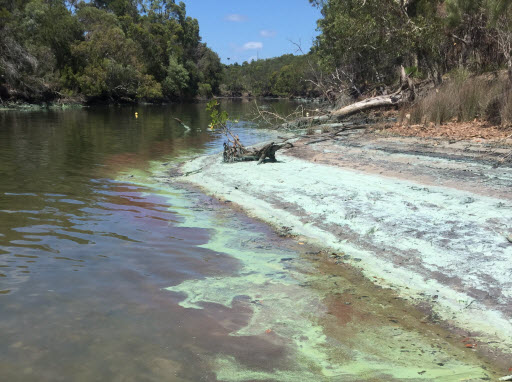Marine algae blooms
Find out more about Trichodesmium algae blooms on the Sunshine Coast.
What is Trichodesmium?
Our subtropical climate on the Sunshine Coast provides warm and sunny conditions. These conditions can assist Trichodesmium to bloom in our waters. Trichodesmium are Cyanobacteria (blue-green algae) that appear naturally in tropical and subtropical ocean waters and are commonly known as sea sawdust, whale sperm, whale food and sea scum.
However during extended calm periods gas vacuoles cause it to rise to the water surface. Once at the surface it forms clumps which on close inspection appear to consist of little brown bundles of threads.
These bundles are just visible to the naked eye, appearing like tiny flecks of sawdust floating on or near the surface. The combination of calm conditions, northerly currents and warm water temperatures causes increased growth, with cell density often becoming great enough to colour the water creating a bloom.
Trichodesmium bloom - what to look for!
Trichodesmium blooms are often visible in the waterways and surrounding ocean of the Sunshine Coast region. The blooms can occur throughout the year but are most common between August and January when they can form very large slicks. Blooms are typically a rusty-brown colour, however some variations in colour may occur with grey, green and purple streaks being observed.
Are they toxic?
In most cases the blooms are harmless but if they deplete the oxygen content of the water, they can cause death to aquatic animals. If allowed to stagnate, Trichodesmium can release a clear, water soluble toxin. This is indicated by a change in colour of the Trichodesmium filaments from a rusty brown colour to a green colour accompanied by the release of a pigment which will colour the water pink. It is this pink colour in the algae that reportedly gave the Red Sea its name.
Generally the concentration of this toxin in natural systems is not sufficiently high enough to pose a threat to human health. Trichodesmium can be easily washed off the skin by rinsing with water. Under certain conditions these blooms or slicks may become beached.
This beaching can result in a putrid, almost ‘fishy’ smell along the beach.
These blooms, beached or free floating, usually disappear in a few days. Please remember if you have come in contact with Trichodesmium it can easily be rinsed off the skin.

